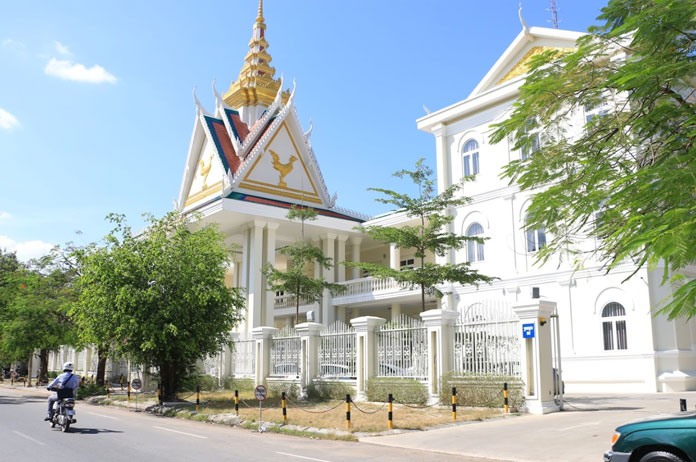Investment Insight: Listing on the Cambodia Stock Exchange

The Cambodia Stock Exchange (CSX) is one of the youngest and smallest stock exchanges in the world and is the national stock exchange of Cambodia.
Who has listed on the CSX?
The first company to list on the CSX was Phnom Penh Water Supply on 18 April, 2012. This was followed by three additional listings – garment maker Grand Twins International, the Phnom Penh Autonomous Port, and the special economic zone operator Phnom Penh SEZ Plc. This is comparable to the initial activities of young stock markets of Laos, which had five listed companies, and Myanmar, which had three listings. By 2019, market capitalisation at CSX had reached $800.39 million. Five companies were listed on the Main Board, while three companies had issued bonds.
Acleda Bank Plc (Acleda) was also the first financial institution to announce it would list on the CSX’s Main Board, with the listing set to be completed by April 2020. This will also be the largest initial public offering (IPO) in Cambodia. It is thought more financial companies will list on the CSX, especially Microfinance Institutions (MFI's). CSX chief operating officer Ha Jong-Weon said in early 2020: “There are many MFIs here. To attract customers, they have to lower lending rates. So they are thinking and asking me about the procedure to list on our exchange. That is a signal that MFIs are considering coming on board." There was a similar push in 2018 for more banks and microfinance institutions (MFIs) and insurance companies to list in the local stock exchange. The establishment, and growth, of the stock exchange represents an important milestone for the maturation of the Cambodian economy. The availability of domestic listing provides Cambodian companies with the opportunity to raise expansion capital without the burdens and limitations of debt financing.
With the prospect of a potential domestic initial public offering, private equity investors are also encouraged to help finance companies at earlier stages of their growth, as exit strategies can be expanded to encompass an eventual local IPO. Public listings also support the Kingdom’s goal to improve corporate and financial compliance as public companies, and companies planning to publically list must generally adhere to higher accounting and governance standards. For listed companies, the advantages of public listing go beyond improved access to financing. Stock options become more attractive to employees, so the ability to attract and retain talented staff is enhanced. Public listing can also improve the recognition and credibility of the company with clients and suppliers. And Cambodia offers certain tax incentives to companies that list on the CSX.
How do companies list on the CSX?
Companies that want to list on the main board of the CSX must meet the following requirements:
- Shareholders’ equity must be at least thirty billion riel ($7.38 million) as of the date of the listing application
- Net profit must be at least two billion riel ($4.92 million) for the latest full financial year prior to the date of application, and the aggregate net profit for the most recent past two financial years must be at least three billion riel
- There must be at least 200 shareholders, holding ten shares or more, who each own less than one percent of the total authorized voting shares
- At least seven percent of total authorised voting shares must be owned by shareholders who each own less than one percent of the total voting shares (unless otherwise approved by CSX and the Securities Exchange Commission of Cambodia)
In order to broaden participation in the CSX, in September 2015, a growth board was established to attract listings from small and medium enterprises. As more companies list on the CSX and trading liquidity, in turn, increases, it is expected that more investors, both international and domestic, will be drawn to invest in the Cambodian bourse. This should, in turn, lead even more companies to look to public listings to finance their growth. By the end of 2019, the number of investors at CSX also reached 22,338, of which about 17% are foreigners. There were five central counterparties in the derivatives market, 27 derivatives brokers, five fund management companies and five trustees by the end of 2019. According to data (released in 2020) from the Securities Exchange Commission of Cambodia, the market regulator, on average, 1.7 million shares – worth about $4.2 million – are traded monthly on the CSX. An active stock exchange takes time to develop. Vietnam’s Ho Chi Min Stock Exchange began in July 2000 with two listings and has grown into one of South East Asia’s most vibrant markets with well over 300 listed companies.
How can you buy shares on the CSX?
In February 2020, it was announced that investors can use Acleda Bank Plc’s app ToanChet to buy shares on the Cambodia Securities Exchange (CSX). Trading at the Cambodia Securities Exchange (CSX) is generally conducted via two methods:
- Auction Trading Method (ATM)
- Negotiated Trading Method (NTM)
It was also confirmed in early 2020, that the negotiated trading method (NTM) had been set at 10 per cent of the previous closing price. This change was implemented to “protect investors and the market from unfair trading” said the market regulator.
This original article was written in 2017 by Joseph Lovell, Partner and Head of Banking & Finance Practice Group at Sciaroni & Associates. The article was updated in February 2020 by B2B CAMBODiA.